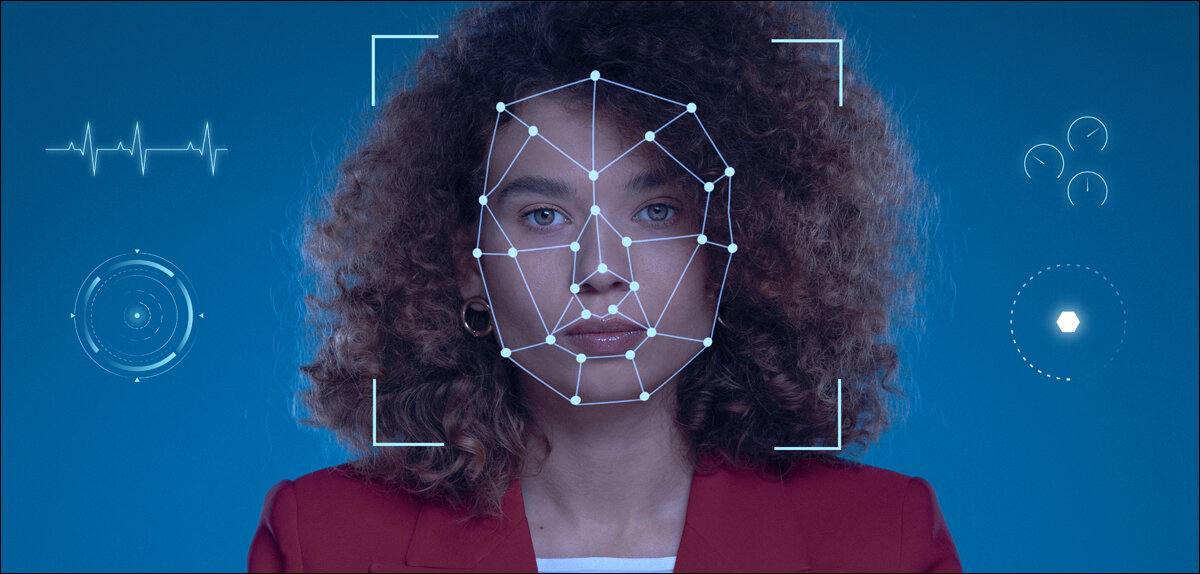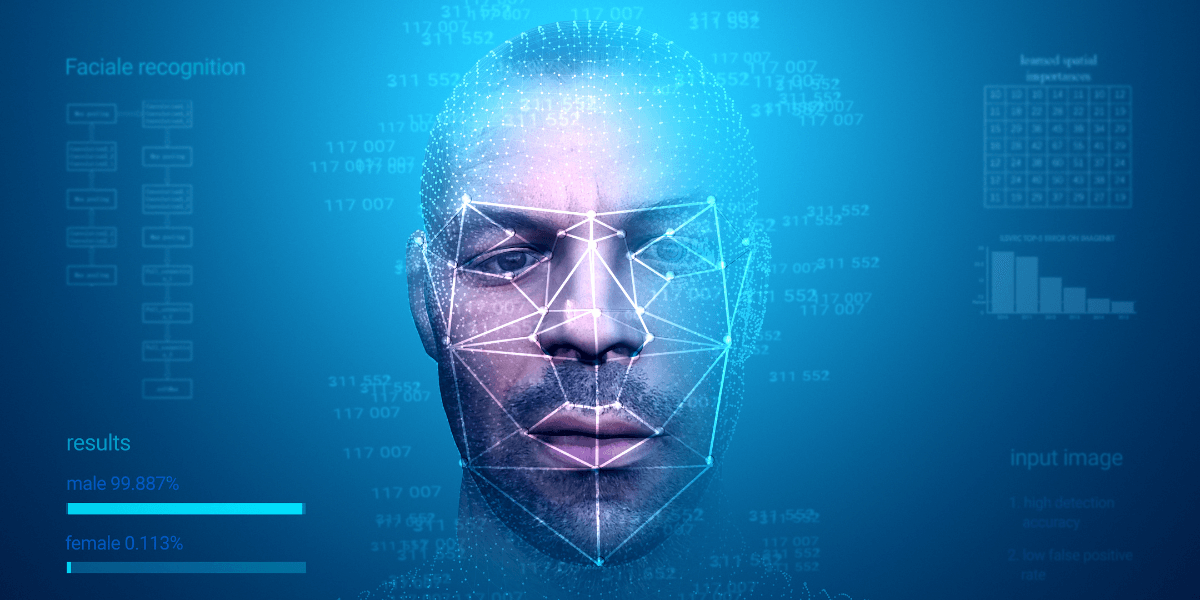Anúncios
In a world where technology constantly redefines the parameters of what we consider normal, facial recognition technology stands out as one of the most intriguing and controversial innovations of our time. As an increasingly common feature in security systems, social media platforms, and other digital spaces, its impact is undeniable. In this piece, we will delve into the labyrinth of its potential benefits and the ethical dilemmas it poses, unfolding the complexities of this pivotal technology.
Imagine a world where your face is your passport, the key to your bank account, and your means of accessing your digital life. This is no longer a distant futuristic vision, but an emerging reality. Facial recognition technology is undeniably transforming the way we navigate both the physical and digital world. However, along with these promising applications, there are significant concerns surrounding privacy, security, and civil liberties that deserve our attention and thorough exploration.
Anúncios
Unravel with us the intricate layers of facial recognition technology as we shed light on its practical applications, the concerns it raises, and the profound implications it holds for our society. By understanding the advantages and potential drawbacks of this powerful tool, we can navigate towards a future where technology serves us and not the other way around. Engage in this exploration, as we unlock the future of facial recognition technology.
The Mechanics of Facial Recognition Technology
Facial recognition technology represents a powerful convergence of biometric science, artificial intelligence, and advanced pattern recognition. As a subset of biometric authentication, it utilizes sophisticated algorithms and machine learning models to identify individuals based on their unique facial features. The primary goal of this technology is to analyze and match facial patterns to verify or determine someone’s identity—quickly, accurately, and with minimal user input.
Anúncios

At its core, facial recognition works by capturing and interpreting an individual’s facial data. This is done through high-resolution imaging systems—such as cameras on smartphones, surveillance systems, or embedded sensors in kiosks—that record facial details. The collected data is then processed using advanced software that analyzes key landmarks on the face. These landmarks may include the distance between the eyes, the curvature of the lips, the contour of the cheekbones, the shape of the jawline, and the structure of the nose. These biometric markers are unique to each person and serve as digital identifiers.
The accuracy and effectiveness of facial recognition technology are largely dependent on the quality, diversity, and size of the facial databases it draws from. Systems trained on inclusive datasets—those representing various ages, ethnicities, and facial variations—tend to perform better across broader populations. Conversely, systems trained on limited or biased datasets may struggle with accuracy, especially when applied to diverse demographic groups. Furthermore, environmental factors like lighting conditions, image clarity, facial expressions, and obstructions (e.g., glasses, masks, or hats) can significantly affect recognition performance.
How It Works: From Detection to Matching
The facial recognition process begins with face detection—a stage in which the system scans an image or video to locate the presence of a human face. Once detected, the software then moves to feature extraction, where it maps facial landmarks and converts them into mathematical representations. These representations are used to generate a faceprint—a unique and encrypted string of numerical data that encapsulates the identity of the individual.
This faceprint is then compared to existing entries in a facial database. If a match is found, the system confirms the person’s identity. If not, it may either flag the individual as unknown or request further input depending on the system’s application. The entire process, from detection to verification, typically takes less than a second, making facial recognition one of the fastest forms of biometric identification available.
Today, this technology is used across a broad spectrum of applications. From unlocking smartphones and facilitating airport check-ins to aiding law enforcement in locating suspects, facial recognition is increasingly woven into the fabric of modern digital life. However, with its growing presence also comes a heightened responsibility to ensure accuracy, fairness, and ethical deployment.
Advantages of Facial Recognition Technology
Facial recognition technology is rapidly becoming one of the most transformative tools in the digital age, offering a wide array of benefits that extend beyond simple identification. From enhancing national security to optimizing everyday user experiences, its applications are growing across industries. When implemented responsibly and ethically, this technology holds the potential to dramatically improve convenience, efficiency, and safety in both public and private domains.

Improved Security and Surveillance
One of the most prominent and widely recognized advantages of facial recognition is its ability to enhance security infrastructure. This technology has been embraced by governments, corporations, and security agencies as a powerful tool for monitoring and protecting high-risk environments. When integrated with existing surveillance systems, facial recognition software can scan and analyze faces in real time, identifying individuals from watchlists or flagged databases. This capability has proven invaluable in crowded public areas such as airports, stadiums, and transportation hubs, where manual identification would be time-consuming and inefficient.
For law enforcement, facial recognition technology aids in criminal investigations by matching images captured from surveillance footage to criminal databases. It can expedite suspect identification, uncover fraudulent identities, and assist in locating missing persons. Additionally, border control agencies use it to screen travelers at entry and exit points, contributing to safer and more secure border management.
Convenience and Speed in Authentication
In addition to bolstering public safety, facial recognition technology also brings a new level of convenience to daily activities. Biometric facial scanning provides a fast, contactless method of authentication that is increasingly used in both physical and digital contexts. Unlike traditional passwords or ID cards that can be lost, forgotten, or stolen, a person’s face is always readily available and unique.
This is especially useful in access control systems for offices, smart homes, and high-security buildings. Facial recognition allows for seamless entry without the need for physical keys or badges. Similarly, in the world of mobile devices, users can unlock smartphones, authorize financial transactions, or log into secure apps just by looking at their screens—a process that takes less than a second and significantly reduces friction in user experiences.
Moreover, as societies continue to prioritize hygiene and contactless technology, facial recognition offers an ideal solution. In payment systems, for instance, some countries have already introduced face-based checkout options where users simply glance at a terminal to confirm purchases. These systems are especially beneficial in reducing queues and minimizing physical contact in places like supermarkets, airports, and public transportation networks.
Enhanced Personalization and Customer Engagement
Beyond security and authentication, facial recognition technology is making waves in the field of personalization and marketing. In retail and hospitality settings, businesses can use facial data—ethically and with consent—to recognize repeat customers and tailor services accordingly. For example, digital signage in stores can display personalized advertisements based on demographic analysis or previous visits, thereby improving customer satisfaction and increasing engagement.
In the entertainment industry, facial recognition can be used to customize gaming experiences or offer real-time audience feedback during events. Social media platforms also leverage facial recognition to improve features like automatic photo tagging, which enhances the user experience by streamlining interaction and reducing manual input.
Furthermore, healthcare is beginning to explore how facial recognition can improve patient care. Some systems are being tested to identify patients, reduce fraud, and even analyze facial expressions for signs of pain, discomfort, or psychological distress, allowing for faster response from medical professionals.
Streamlined Operations and Cost Efficiency
Businesses and institutions are also turning to facial recognition to streamline operations and improve productivity. For example, workforce management systems can track attendance or verify employee access without manual check-ins or swipe cards. In manufacturing and logistics, facial authentication can reduce downtime and improve workplace security.
From an operational perspective, the implementation of facial recognition can reduce the need for multiple verification systems, resulting in lower maintenance and training costs. Over time, the efficiency gains from automated identification can significantly outweigh initial implementation expenses, especially in large-scale environments.
Emergency Response and Disaster Management
Another powerful benefit lies in emergency response. During natural disasters or mass evacuation scenarios, facial recognition systems can help quickly identify individuals in need of medical care or reunite separated family members. In large-scale public events or emergencies, facial scans can be used to monitor entry points, flag suspicious activity, and ensure a faster response in critical situations.
Educational and Institutional Uses
In academic institutions, facial recognition is already being tested to enhance campus safety, monitor attendance, and even gauge student engagement in classrooms. While such uses must be carefully balanced with privacy concerns, when used appropriately, they can reduce administrative burden and contribute to a more secure learning environment.
Looking Ahead
As we move toward an increasingly interconnected world, the potential uses for facial recognition technology will continue to grow. Smart cities may integrate it into infrastructure to manage traffic flow or monitor urban safety, while financial institutions explore it as a core component of digital identity verification. With continuous advancements in AI, machine learning, and edge computing, the accuracy, speed, and scalability of facial recognition systems are expected to improve dramatically.
Challenges and Concerns with Facial Recognition Technology
Data Privacy and Consent
Facial recognition technology’s reliance on vast databases of personal facial data has sparked privacy concerns. The potential misuse of this data, whether through unauthorized access or malicious intent, is a significant issue. Moreover, the question of whether individuals have a say in the collection and use of their facial data is a critical concern.
Accuracy and Bias
Studies have revealed that facial recognition technology is subject to inaccuracies and biases. Factors such as race, age, and gender can affect the system’s accuracy, with higher error rates reported among certain demographic groups. This raises concerns about fairness and discrimination.
Regulation and the Way Forward
As facial recognition technology continues to advance and permeate various aspects of modern life, the importance of establishing a robust regulatory framework becomes increasingly apparent. The power of this technology to identify individuals in real-time, track behaviors, and collect sensitive data demands thoughtful oversight to prevent abuse and ensure it is used ethically and responsibly.
The Role of Legislation
Effective legislation plays a crucial role in safeguarding citizens’ rights while still allowing innovation to flourish. Governments and policymakers must work collaboratively with tech developers, privacy advocates, and civil society to create comprehensive laws that outline clear boundaries for the use of facial recognition systems.
Such legislation should address fundamental aspects including informed consent, data retention policies, third-party access limitations, and explicit use-case approval. For example, individuals should be made fully aware when their facial data is being collected, for what purposes, and how long it will be stored. Moreover, companies or institutions using this data must be held accountable through stringent compliance measures and transparency obligations.
In democratic societies, it is also essential to ensure that facial recognition is not used for unwarranted mass surveillance or to suppress freedoms of assembly and expression. Without strict regulatory oversight, there is a risk of normalizing invasive practices that could lead to a surveillance state, undermining public trust and infringing on civil liberties.
Advancements in Technology
On the technological front, progress must be coupled with responsibility. Innovations aimed at enhancing the accuracy, fairness, and inclusivity of facial recognition systems are paramount. Developers must continue refining machine learning algorithms to minimize false positives and reduce biases linked to race, gender, and age. These issues have drawn widespread criticism, especially when facial recognition systems have been shown to perform less accurately on marginalized populations.
By investing in diverse and representative training datasets, we can make the technology more equitable and reduce the risk of discriminatory outcomes. Additionally, incorporating privacy-by-design principles into system architecture—such as on-device processing and anonymized data handling—can help mitigate privacy concerns and bolster user confidence.
Global Collaboration and Ethical Standards
Creating a shared global standard for facial recognition practices is another key step forward. As this technology knows no borders, international collaboration is necessary to align on ethical standards, data protections, and cross-border enforcement protocols. Organizations like the UN, the EU, and data protection watchdogs have begun pushing for human rights-centric frameworks, but more coordinated efforts are needed to achieve true global consensus.
Striking the Right Balance
Ultimately, the path forward for facial recognition technology must be paved with a commitment to balance—between innovation and ethics, progress and protection. The goal is not to stifle technological advancement but to shape it in a way that serves the public interest and respects fundamental rights.
With a clear legislative structure, transparent deployment, and continuous technological refinement, we can harness the benefits of facial recognition while avoiding its potential pitfalls. The choices we make today will determine how this powerful tool integrates into society tomorrow—either as a force for good or a mechanism of overreach. The future is still unwritten, but with the right safeguards, we can ensure that facial recognition technology becomes an asset, not a liability, in the digital age.
Conclusion
In conclusion, facial recognition technology represents a powerful tool that can unlock a future filled with incredible possibilities. The technology offers significant advantages, including enhanced security, streamlined processes, and opportunities for personalization. However, it is not without its drawbacks, such as potential privacy infringements and accuracy issues, which can lead to misidentification.
The key to leveraging the benefits of facial recognition lies in responsible usage. Regulatory frameworks should be established to address privacy concerns, while technology developers must continually work on improving the accuracy of the systems.
Society stands at the precipice of an era defined by advanced technology. As we move forward, it is crucial to ensure that the benefits of facial recognition technology are harnessed while mitigating the risks. In essence, the future of facial recognition technology is not set in stone; it depends on how we choose to shape it. Thus, an open, well-informed conversation about this technology is not only helpful, but necessary to unlock a future where technology serves as a tool for good, rather than a source of contention.

